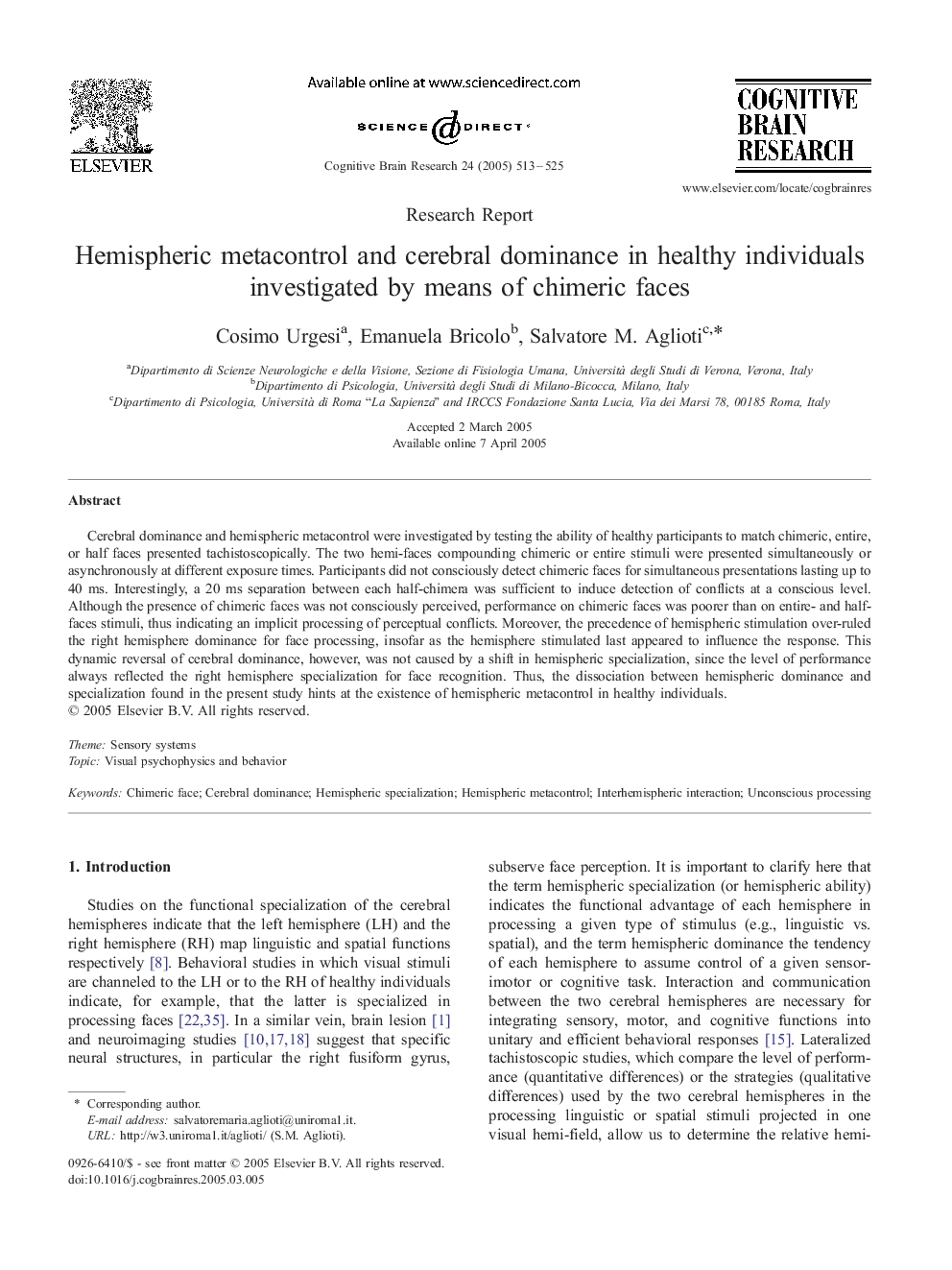| Article ID | Journal | Published Year | Pages | File Type |
|---|---|---|---|---|
| 9408025 | Cognitive Brain Research | 2005 | 13 Pages |
Abstract
Cerebral dominance and hemispheric metacontrol were investigated by testing the ability of healthy participants to match chimeric, entire, or half faces presented tachistoscopically. The two hemi-faces compounding chimeric or entire stimuli were presented simultaneously or asynchronously at different exposure times. Participants did not consciously detect chimeric faces for simultaneous presentations lasting up to 40 ms. Interestingly, a 20 ms separation between each half-chimera was sufficient to induce detection of conflicts at a conscious level. Although the presence of chimeric faces was not consciously perceived, performance on chimeric faces was poorer than on entire- and half-faces stimuli, thus indicating an implicit processing of perceptual conflicts. Moreover, the precedence of hemispheric stimulation over-ruled the right hemisphere dominance for face processing, insofar as the hemisphere stimulated last appeared to influence the response. This dynamic reversal of cerebral dominance, however, was not caused by a shift in hemispheric specialization, since the level of performance always reflected the right hemisphere specialization for face recognition. Thus, the dissociation between hemispheric dominance and specialization found in the present study hints at the existence of hemispheric metacontrol in healthy individuals.
Keywords
Related Topics
Life Sciences
Neuroscience
Behavioral Neuroscience
Authors
Cosimo Urgesi, Emanuela Bricolo, Salvatore M. Aglioti,
